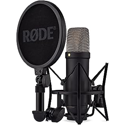Radio’s Key Impact During Economic Crisis
During the late 1970s and early 1980s, radio had a pivotal role in assisting with the inflation crisis. At the time, FM radio was increasing in popularity and demand for music led to record companies inflating the prices of their catalog. This lack of price competition caused the price of albums to increase sharply. In response, consumers turned to radio stations to listen to music for free instead. By doing so, they deprived record labels of sales but saved them money in the long run. As the price increases continued, the popularity of listening to free music on FM stations increased as well.
The popularity of radio grew in the mid-1980s as cassette tape players became more popular. Music lovers began taping their favorite songs from the FM airwaves so that they didn’t have to pay full price for them later. This trend eventually put many major record companies out of business. Radio played an important role during this era as it helped to sustain demand for music when record companies couldn’t compete with each other to provide competitive pricing for their albums.
In the late 1970s and early 1980s, there was a severe inflation crisis that crippled the US economy and caused the unemployment rate to rise to over 10%. During this time, record companies were struggling to compete with each other and control the price of their products. In order to boost sales, some companies began selling pre-recorded cassettes of some of their older albums at reduced prices. These tapes were sold at a lower price than the regular album and allowed customers to listen to the music without buying the entire CD. As the price of CDs continued to increase, this and other price-cutting tactics used by record companies helped lead to the demise of several well-known labels in the 1990s. According to the Wall Street Journal, “By the late 1980s, 80 percent of US households owned a CD player.” By the early 1990s, the sales of CDs surpassed those of vinyl records for the first time in history.

Christian Science Monitor
Economic woes raise fear of 1970s rerun – CSMonitor.com
In the 1960s and 70s, the most popular music listening device was the record player, which was primarily used for playing vinyl records. Because these devices could not be played outside the home or in cars, it was generally considered to be a device only used for listening to audio recordings. However, as consumers became more concerned about audio quality and convenience, the popularity of vinyl began to decline. By the early 1980s, record players had fallen out of favor with consumers and many were starting to switch over to compact discs instead. Some experts estimate that there were as many as 60 million record players still in use in the US at the time.
Today, the rise of digital music streaming has relegated the role of radio to that of background music while people work or do other chores around the house. As a result, some radio stations have shut down and others have been forced to change their format in order to compete more effectively with the growing number of online streaming services available today. In the future, it is likely that some radio stations will continue to thrive while others will not as they adapt to the changing market. But if anything, the health emergency in the last 2 years and the worsening climate disturbances have made people realized that radio is still king when it comes to emergency.

Pew Research Center
Online audio listenership | Pew Research Center









